 For years man has been struggling with that nagging question, "What is the difference between an violin and a fiddle?" Almost every time I play somewhere I can count on being asked that question.
For years man has been struggling with that nagging question, "What is the difference between an violin and a fiddle?" Almost every time I play somewhere I can count on being asked that question.
One night in Homestead Florida I was sitting in on a jam session with some old gents that must have each been close to 100 years old. Their instruments were all beat up well worn. The banjo player had a clothes pin for a bridge and the head was well blackend where his fingers had rubbed it, the guitar pickers guitar was split around the edge (I think it was a Kay), the bass had a massive hole in the back and the fiddlers fiddle was almost white with rosin. All in all I'd say those were some very well used and happy instruments.
During that normal pause that you have in a jam to talk about "What do you want to play now?" I asked the fiddler, "Sir, can you tell me the difference between a fiddle and a violin?"
The old guy kind of glared at me and said "Son, Do you have a nickname?"
I thought to myself, "Now that's one way to dodge a question." and then answered. "Yes sir, some folks call me bear." (This was before the "Flyin Fiddler" or "Tiny" era of my life) The old man replied,
"Son, the only difference is the name. Fiddle is just a nickname." He adjusted the wad of tobacco in his mouth with his tounge, spit, put the fiddle to his chin and took off on "Ragtime Annie".
I have never forgotten that hot muggy night in Florida, nor have I forgoten the old mans answer.
Is what he told me true? I have read of a fiddle being an instrument like a violin but with a 5th sting that was plucked and not bowed.
This page is for your opinion on the difference between a violin and fiddle.
The truth is out there! Let me know what you think!



 Depends on how you hold it.
Depends on how you hold it. I believe the only difference between a fiddle and a violin is how it's played.
I believe the only difference between a fiddle and a violin is how it's played. A violin has four strings.
A fiddle has too.
A violin has four strings.
A fiddle has too.
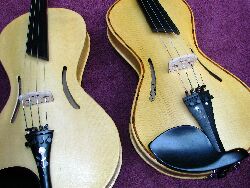

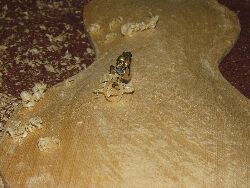
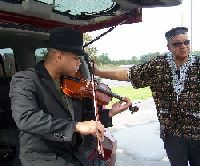 Here's my theory:
Here's my theory:
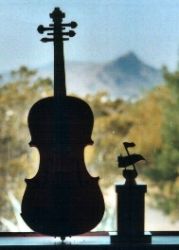
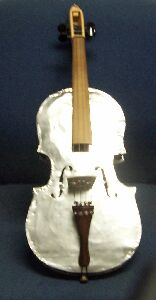
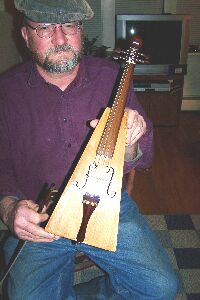
 She was a violin when I met her, but she's a fiddle now!
She was a violin when I met her, but she's a fiddle now!
 A violin is the instrument you carry to rehearsals.
A violin is the instrument you carry to rehearsals.
 To me the fiddle means: working class folks just playing around on not sobering serious music, but having fun playing balads, hoedown, jigs, reels and hornpipe music.
To me the fiddle means: working class folks just playing around on not sobering serious music, but having fun playing balads, hoedown, jigs, reels and hornpipe music. I've always heard tell that a violin has 'strings' and a fiddle has
'strangs'.
I've always heard tell that a violin has 'strings' and a fiddle has
'strangs'. Wayne,
Wayne,  OK - you asked for it...
OK - you asked for it... Violin or Fiddle?? Same Instrument, Different Tunes........
Violin or Fiddle?? Same Instrument, Different Tunes........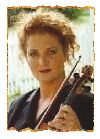 Well, I agree with the old time fiddler. Violin......Fiddle....... same thing. However, I have talked with classical violinists who get outright "Put Out" if you call their violin "A fiddle". When I was a young girl, I remember someone telling me that some fiddler's prefer a flatter bridge to help them with double stops or shuffles, where most violinists prefer a more rounded bridge to aid in articulation and clarity. So, in this instance there may be a slight difference. In most cases though, whether for fiddler or violinist the bridge is rounded according to the shape of the fingerboard. It all depends on who's soing the playing. Fiddler plays the fiddle. Violinist plays the Violin. There are some of us who do both. Honestly though, it's not so much what the instrument is called that matters. What matters is how much a part of the musician it becomes. A loving tune from the heart of a fiddle player speaks more deeply than thought. Vibrato rich and sweet. Haunting and melodious. A jaunty jig, full of life, the soul sours heavenward, itching to dance.
Well, I agree with the old time fiddler. Violin......Fiddle....... same thing. However, I have talked with classical violinists who get outright "Put Out" if you call their violin "A fiddle". When I was a young girl, I remember someone telling me that some fiddler's prefer a flatter bridge to help them with double stops or shuffles, where most violinists prefer a more rounded bridge to aid in articulation and clarity. So, in this instance there may be a slight difference. In most cases though, whether for fiddler or violinist the bridge is rounded according to the shape of the fingerboard. It all depends on who's soing the playing. Fiddler plays the fiddle. Violinist plays the Violin. There are some of us who do both. Honestly though, it's not so much what the instrument is called that matters. What matters is how much a part of the musician it becomes. A loving tune from the heart of a fiddle player speaks more deeply than thought. Vibrato rich and sweet. Haunting and melodious. A jaunty jig, full of life, the soul sours heavenward, itching to dance. 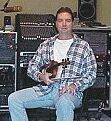 The difference between a fiddle and a violin? About 20 Grand a year's what I heard.
The difference between a fiddle and a violin? About 20 Grand a year's what I heard.